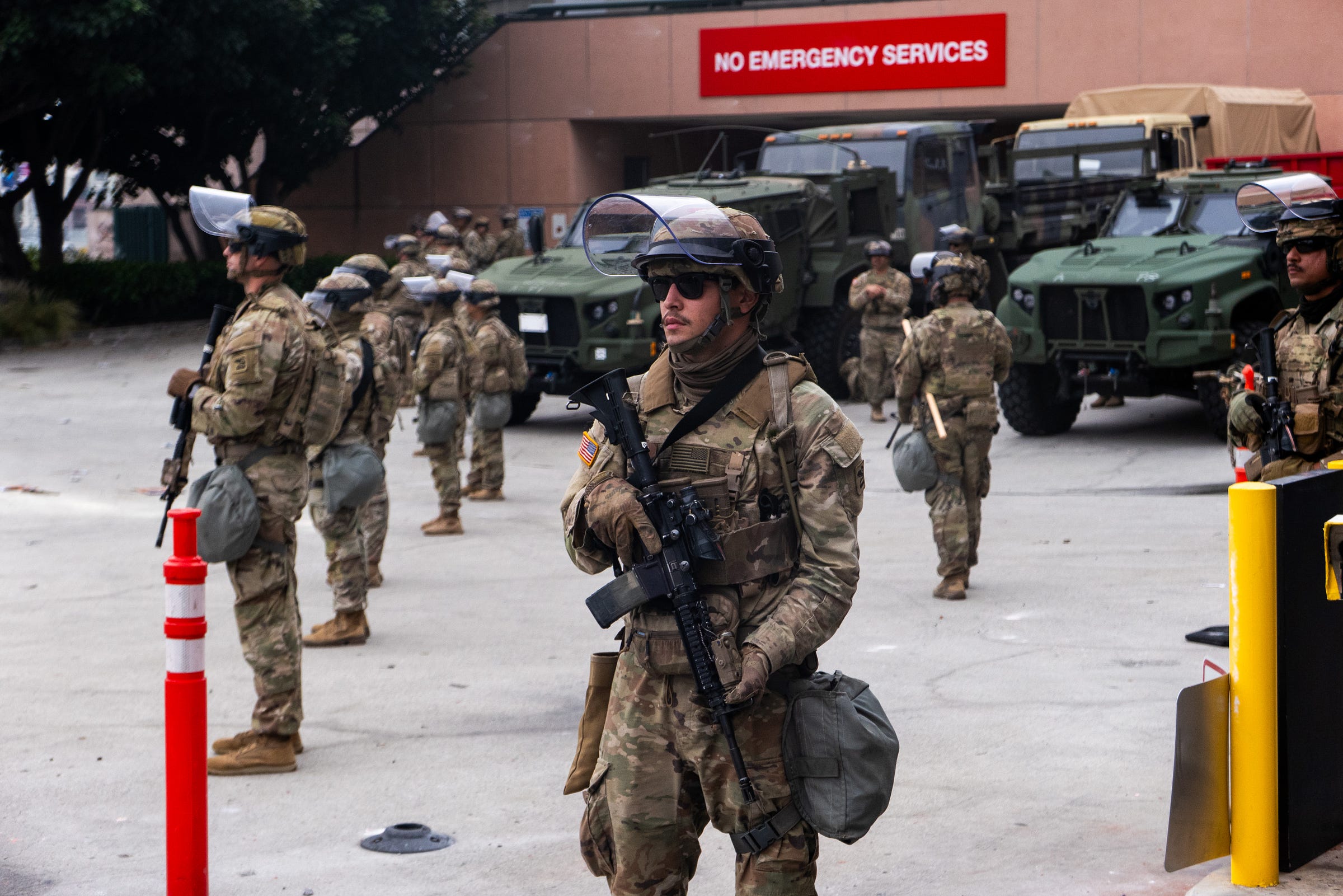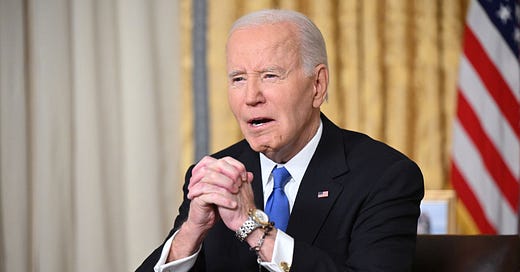
The Only Rule Left Is the Rule of the Gun
Instead of asking whether Trump is allowed to do something, the press needs to keep track of who's holding the weapons.
The United States, broadly speaking, runs on a pretty solid foundation of representative government laid out in the Constitution. It is not perfect. Some parts of it are fundamentally broken. But in general, for the past couple centuries, it has kept the lid on the entropy that comes from human beings seeking to live together and govern each other inside the arbitrary borders of a nation-state.
But this foundation, system, Constitution, all of that — it is just words on paper. Words on paper are useful if, and only if, people in the real world read them and allow them to govern their actions. In America, for the most part, our elected leaders have been pretty good at that, all of which is to say I can fully understand how and why many journalists, pundits, and everyday people can operate under the assumption that this system is actually what undergirds human society. That assumption leads to many, many pieces like this:
These are, in some ways, useful pieces! And I understand why they continue to be written. During the first Trump administration, Donald Trump himself and the officials underneath him operated far more within the bounds of America’s “words on paper” system: the courts, the codes, the lawyers involved. There was plenty of boundary-pushing and plenty of broken norms, but many of Trump’s most drastic actions in his first term were held up indefinitely through a complicated web of court cases and procedural battles that required this cottage industry of law-explainers. Jeffrey Toobin, for example, was allowed to resume a very high-profile media career after jacking off on a work Zoom call because he is one of the best-informed people on this beat! It is useful knowledge for understanding the system of governance that, at the time, was still largely determining whether or not the president could do something.
But what these pieces — and the overall dispositions of mass media outlets — miss, I think, is the fact that the second Trump administration is far, far less concerned with this system. There are very smart and very well informed people, right now, in Washington D.C. who have moved to a different sort of governance, in which they have realized that their ability to take a certain action often does not depend on a piece of paper and instead depends on whether or not you can give orders to people who have guns.
That sounds drastic, I know. It sounds fatalistic and melodramatic and hysterical. But bear with me: I am not a liberal screeching that Donald Trump is a fascist, that he is a tyrant, that he is trying to bend the law in order to codify more power, that he is weaponizing the Supreme Court or the Bully Pulpit or Executive Orders or anything like that. He is and is doing all of those things, but that’s not the point. The point is that he and his staff are operating on a different level of politics than basically everyone else right now, and the rest of society desperately needs to catch up. That level of politics, to reiterate, is one that is decided with guns.
The first time I wrote about this was on January 6, 2021. That was, in my opinion, the country’s first real national example of “politics by gun” in the modern era. At the time, I wanted to reiterate that the scenes we were seeing were a breakout moment of the system behind the curtain — not a new trend, just one that is usually sanitized and softened by the words on paper. Now we have more examples: there are Marines on the streets of L.A., operating with an unclear justification in unclear jurisdiction under unclear sets of orders. They are, perhaps, not even trained for the actions they are meant to take. Just this morning, a senator was tackled and handcuffed after attempting to ask DHS Secretary Kristi Noem questions at a press conference. Can she do that? Can Trump send Marines to LA? Can he arrest the governor of California, as he has threatened to do, if the governor continues to challenge his orders to the already-deployed National Guard?
The reason that the Trump administration can do these things is because, at the moment, the people with guns are following their orders. The local cops, the national guard, the regular infantry: they are following their Commander-in-Chief. Trump understands this. It is even, to an extent, outlined in words on paper. As Hamilton Nolan wrote in April:
In their oath of enlistment, soldiers vow that “I will support and defend the Constitution of the United States against all enemies, foreign and domestic; that I will bear true faith and allegiance to the same; and that I will obey the orders of the President of the United States and the orders of the officers appointed over me, according to regulations and the Uniform Code of Military Justice.”
It is easy to see the inherent tension in this vow. Though you are expected to act according to the Constitution, in practice, you are expected to follow the orders that flow from the President. What happens if the President is acting unconstitutionally?
What happens indeed? This is the analysis, I think, that needs to find a place in the major newspapers and networks that are still, largely, operating independently of the government. We need reporting not on the “constitutionality” of a given action, but on whether or not the people instructed to take it will actually obey. I need to know, now, the disposition of California National Guard leaders towards Gavin Newsom. I need to know who has the guns. Right now, it seems like it’s Trump. I am not so fatalistic as to think that this means we are in for mass shootings by federal forces on the streets of the country’s second-largest city, but it certainly puts that in the realm of possibility. I need to know how developed Trump and his administration’s ties are to the guns in our country, how much loyalty they command, and which groups of guns they will seek to deploy next. This is real politics. This is happening today. The Trump administration has been careful and deliberate at picking and choosing the guns that they want to deploy: the fact that DHS and ICE are the first choices for exerting his power is not a mistake. Who is next? Which military base will he visit next? How will he screen and classify the disposition of the soldiers he appears in front of?
There is some discussion of this. The New York Times published a reasonably argued but mildly worded op-ed to this effect the other day, saying that the military may “find itself in an impossible situation,” in which they are given orders that directly contradict the oaths they have taken. That situation, arguably, is now, and I think the citizens of this country would be best served by real reporting that starts from this point, not hints at the specter of it in some hypothetical future that is easy to put out of mind. We’re here. This is our world. This is our country. If we want our lives to ever be governed comfortably by the veneer of words on paper again, we need to start keeping track of who’s holding the guns.





















Solid points. But does this mean that Donald Trump is now ruling according to Mao Zedong's maxim that "Power grows from the barrel of a gun"? Is this the America any of us would like to live in?
'
I’m reading this in the morning, so I apologize if I simply reiterate a point already made:
The Rule of the Gun seems pretty unadorned when talking about US power projection beyond its borders. Iraq, Afghanistan, Vietnam, those are obvious examples. Our current events seem like an example of “the frontier comes home, eventually.”
(And we could make similar points for parts of the US population: the poor, people of color, the homeless, etc.)